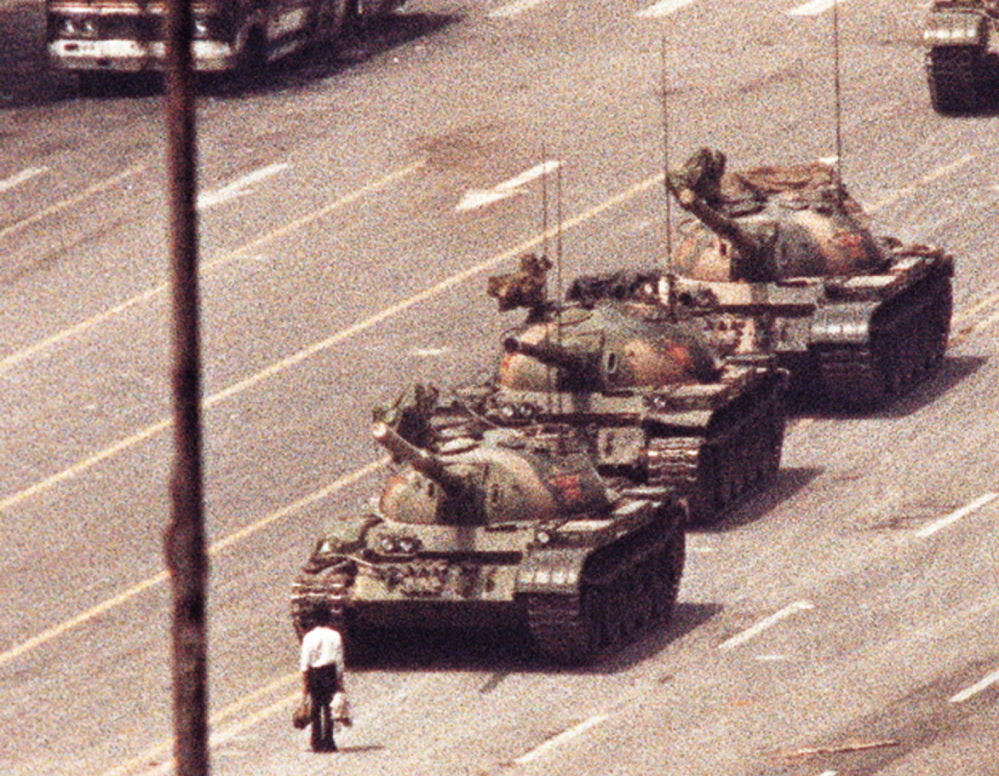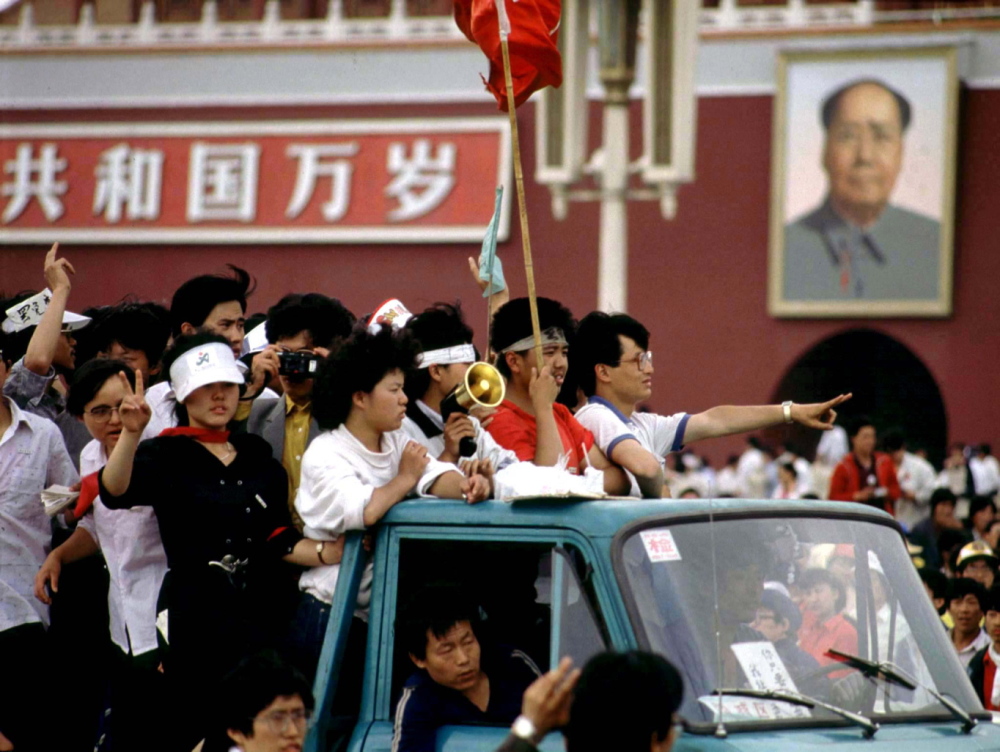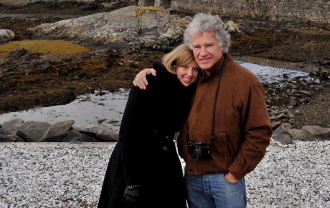BEIJING — He captured one of the iconic photographs that immortalized the Tiananmen Square protests in 1989: a lone man in a white shirt standing before a row of tanks, seemingly fearless after the Chinese military has unleashed a bloody assault on pro-democracy protesters.
Nearly 25 years later, photographer Jeff Widener is left with bittersweet memories of that day and place. Sweet, because his “Tank Man” photo brought him international fame and serendipitously connected him, two decades later, to the love of his life. Bitter, because so many people died in a military assault that China’s government, to this day, refuses to acknowledge.
“I have always felt Tank Man was like the unknown soldier. He will always symbolize freedom and democracy,” Widener said in an email exchange with McClatchy. “The Chinese government shot itself in the foot making this guy a martyr.”
25 YEARS LATER
This month marks the 25th anniversary of the start of protests in Beijing’s largest public square that grew over six weeks until China’s Communist Party decided they had become too much of a threat. Martial law was declared in late May, and troops with tanks and machine guns moved into the square early on June 4. Hundreds – some say thousands – of people died. So did hopes for a more tolerant and open society in post-Mao China.
In coming weeks, there will be no public remembrances here of what China once called “the counterrevolutionary riot.” The government has banned all discussions and imagery of the Tiananmen protests, including Widener’s photo.
Elsewhere, the memorials have already started. A Tiananmen Square museum is under construction in Hong Kong, a former British territory that still enjoys partial autonomy from Beijing. On Saturday, Widener will be one of the guest speakers at a conference at Harvard University titled “Keeping the Memory Alive.”
Rowena Xiaoqing He, a Harvard lecturer who organized the conference, said she’d invited Widener because of the enduring power of the image he’d captured. Born in China and educated in Canada, He recently published an oral history of Tiananmen protesters who were forced into exile after the government crackdown.
“Tiananmen can remind us of repression, but the Tank Man symbolizes people’s power and the struggles for freedom and human rights,” said He. Because of the image, “history will witness the Tiananmen spirit, as the power of the powerless, again and again.”
Widener was working as an Associated Press photo editor in Bangkok, Thailand, when the Tiananmen protests began, sparked by the death of a Communist Party leader viewed as relatively tolerant of student dissent. The AP dispatched Widener to help cover the demonstrations, an increasingly dangerous assignment as the crowds grew more restless.
Hoping to get a vantage point on the action, Widener rode a bicycle to the Beijing Hotel, his camera and other equipment stuffed into his clothes. To avoid security police in the lobby, Widener yelled out to a hotel guest, pretending to know him. The guest, Kirk Martsen, played along, and helped Widener get up to a balcony at the hotel, which overlooks Changan Avenue in Tiananmen Square.
Widener ran out of film while taking photos. Martsen, a college student, again came to his aid by tracking down a roll of color film from a tourist.
LUCKY ROLL
Even with this lucky roll, Widener “nearly blew the shot,” he later recalled. Of three images he captured of the man standing in front of the tanks, only one had the right exposure. Widener was fairly certain that Tank Man would die at any moment, but the lone protester was pulled away by bystanders, and the tanks rolled on.
When Widener’s photo went out on the wires, it was an instant sensation, appearing on the front pages of hundreds of newspapers. It later became a finalist for the Pulitzer Prize, and America Online selected it as one of the 10 most famous images of all time.
It never would have gotten out without the help of Martsen, who Widener says smuggled the film to the U.S. Embassy in Beijing, which in turn delivered it to the AP. Widener didn’t even know Martsen’s name at the time, but years later the two reconnected. Widener says he then learned that Martsen had risked his life that day — encountering gunfire and more soldiers in delivering the film.
MYSTERY MAN
While Widener was able to eventually identify Martsen, Tank Man remains a mystery. Theories abound that a Chinese firing squad later executed the man in the white shirt. Others say he escaped and quietly blended back into society.
Widener is still astounded that a quarter-century later no one has been able to pin down Tank Man’s identity. “This is just amazing,” he said. “How could this guy have disappeared off the face of the planet?”
No photographer likes to be defined by a single image, but Widener has grown accustomed to the attention his photograph continues to draw, particularly on or around early June.
In 2009, before the events’ 20th anniversary, the BBC flew him back to China for a documentary. Widener, then working as a photographer at the Honolulu Advertiser, experienced another Beijing day that changed his life.
“While making a sentimental walk down Changan Avenue towards the Tiananmen Square, I spotted a pretty young blonde,” he recalls. She turned out to be a German teacher named Corinna Seidel, who was backpacking through China.
The two struck up a conversation and ended up in a candlelit tea house during a rainstorm. “We came to the realization that though there was a 22-year age gap, we were meant for each other,” he said. They were wed in Honolulu the next year.
Widener, now 57, lives with Seidel in Hamburg, Germany, where he works as a freelancer. He likes to joke that if anyone had told him he’d later meet the love of his life in Tiananmen Square, “I would have thought they were smoking something.”
That 2009 visit, however, gave Widener some hope for China’s future. The Chinese citizens he encountered were friendlier and more open than during the tense days of 1989.
Send questions/comments to the editors.





Success. Please wait for the page to reload. If the page does not reload within 5 seconds, please refresh the page.
Enter your email and password to access comments.
Hi, to comment on stories you must . This profile is in addition to your subscription and website login.
Already have a commenting profile? .
Invalid username/password.
Please check your email to confirm and complete your registration.
Only subscribers are eligible to post comments. Please subscribe or login first for digital access. Here’s why.
Use the form below to reset your password. When you've submitted your account email, we will send an email with a reset code.